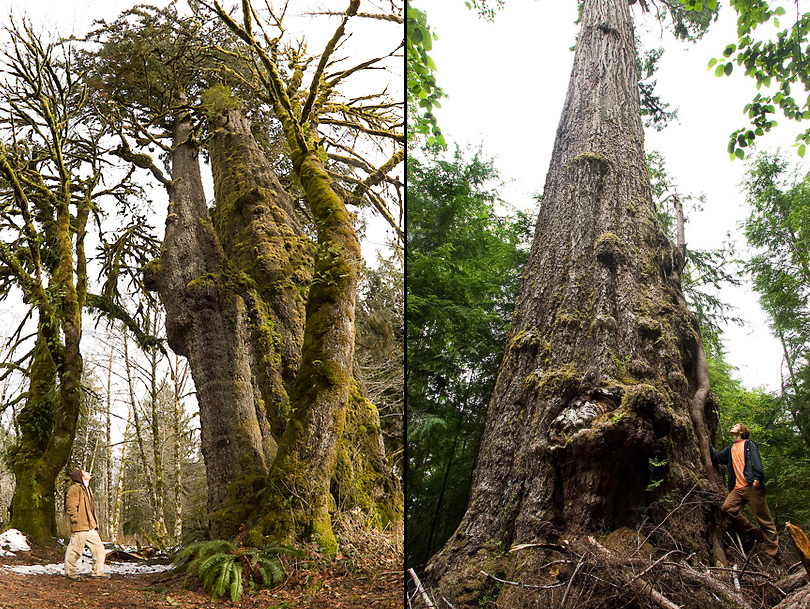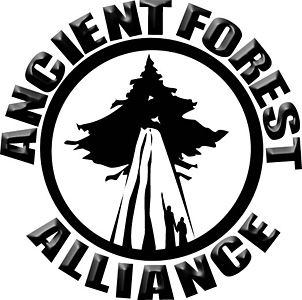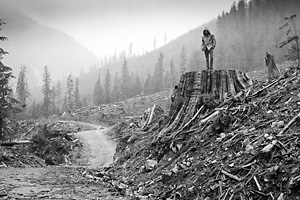
Tall Tree Music Festival in Port Renfrew, Friday June 25 – Sunday June 27
This weekend festival in Port Renfrew is being hosted by various local businesses, including the Bigfish Lodge, Wild Coast Cottages, Sitka Surfboards, and Radio Contact Productions, in support of the Ancient Forest Alliance (AFA). The festival will feature bands and DJs from across Canada playing in a coastal venue with views over the West Coast Trail and the Port San Juan. Proceeds from the ticket sales will be donated to the AFA. For more information, please visit https://www.radiocontact.ca/

Ahimsa Yoga in Sooke Hosts Fundraiser for the Ancient Forest Alliance
Ahimsa Yoga in Sooke is hosting a special Karma Yoga class with all proceeds donated to the AFA!

Ancient Forest Alliance Avatar Grove Trip March 2010
On March 28th 2010, the Ancient Forest Alliance lead its first public hike to help save the Avatar Grove and to raise awareness about Vancouver Island's rapidly vanishing old-growth ecosystems. 80 people made the trip in the wet weather to see the spectacular forest. Filmed and edited by Nic Vandergugten.

Old-Growth Forest Slideshow Comes to Saltspring Island on Thursday, May 27
An informative and spectacular slideshow presentation of the largest trees in Canada including the Red Creek Fir, San Juan Spruce, Cheewhat Cedar and the newly-discovered Avatar Grove, and the politics and ecology of BC's old-growth forests and forestry jobs, will be presented on Thursday, May 27 (7:00-8:30 pm, Central Hall on Fulford-Ganges Rd., by donation) by Ken Wu and TJ Watt of the newly formed Ancient Forest Alliance (AFA).

Bikram Yoga Fundraisers for the Ancient Forest Alliance
Bikram’s Yoga (Saanich) is holding a fundraising yoga session for the Ancient Forest Alliance tonight (and the next two Fridays in May)! Many thanks to them!
7:45 pm, #100 – 1620 Garnet Road

Big Trees Pedal Powered Tour
10 cyclists will be riding 260 kilometers to the biggest trees in Canada by Port Renfrew, the Red Creek Fir and the San Juan Spruce and to the spectacular Avatar Grove, from June 3 to 6 to raise funds and awareness for the Ancient Forest Alliance!

Fundraising Update
So far 200 supporters have contributed $8854 since we launched our funding drive on March 22, with a minimum goal of raising $20,000 by June 21.

Celebration of Nature, Music and Dance – Ancient Forests and Sound
Old-growth forests are our natural heritage, and BC's south coast holds one of the last such ecosystems on Earth. Our ancient forests support a complex network of which we are all part, yet these forests continue to be logged at a rate that will soon lead to their extinction if we do not make a change. The Ancient Forest Alliance is a grassroots environmental organization that works to foster knowledge and connection to these forests, as well as to advocate politically for their protection.

Victoria Natural History Society article
A new organization has recently emerged in the world of BC’s non-profit environmental community: the Ancient Forest Alliance. Founded in January 2010 by former Wilderness Committee activists, the new organization seeks to continue the grassroots education and mobilization campaigns to protect old-growth forests, but with a new twist: without charitable status, which will enable the organization to get more political in its criticisms or endorsements of politicians. This will become a great motivator for the BC government and all political parties to embrace a conservation agenda to protect the disappearing ancient forests of Vancouver Island and southern British Columbia. In addition, the organization will be building broad-based support among First Nations, businesses, faith groups, scientists, and members of naturalist clubs for ancient forest protection.

Upcoming AFA Events and Hikes!
Sunday, April 25 - Nature/ Old-Growth Walk in Mount Douglas Park: Oak Bay-Gordon Heads’ Old Growth in its Own Backyard
Thursday, April 29 – Vancouver Island’s Biggest Trees and Biggest Stumps – Launch Presentation of the new Oak Bay – Gordon Head Ancient Forest Committee
Saturday, May 1st – Lower Mainland Old-Growth Hike up Sumas Mountain (near Abbotsford at Whatcom Road Exit)
